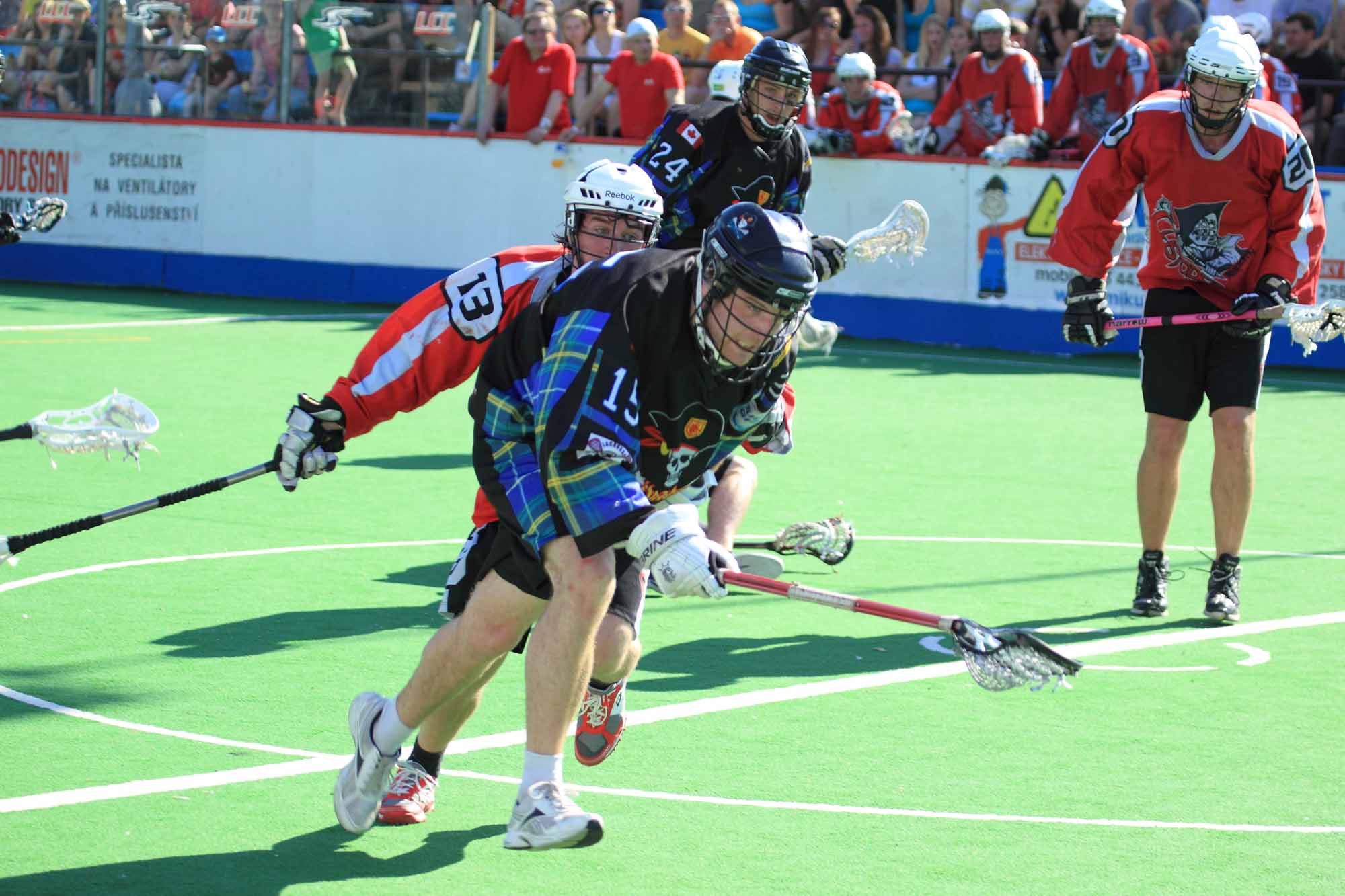The period from the 1890s to 1914 has been called the “golden age of lacrosse” in Manitoba. At one point, Winnipeg had seven lacrosse leagues and 32 teams, and crowds of more than 5,000 people would attend games. The Winnipeg Shamrocks were one of two Canadian lacrosse teams that competed at the 1904 Olympic Summer Games. The Shamrocks won two games of field lacrosse to earn the first Olympic gold medal in men’s lacrosse.

Background Context
The 1904 Olympic Summer Games were originally slated to take place in Chicago, but at the urging of US president Theodore Roosevelt they were relocated to St. Louis, Missouri, to coincide with the Louisiana Purchase Exposition, also known as the World’s Fair. The Olympic Games were thus a smaller part of a larger event.
Travel costs to the relatively remote city of St. Louis and growing tensions in Europe due to the Russo-Japanese War discouraged many nations from participating. As a result, only 12 countries were represented at the Third Olympiad. Of the 650 competing athletes, fewer than 100 were from outside the United States. About half of the non-American competitors were Canadian.
The 1904 Games marked the first time Canada was truly represented at the Olympics. No Canadians participated in the First Olympiad, held in Athens in 1896. In 1900, Canadian-born George Orton won a gold and a bronze medal in track and field events, but he did so representing the United States.
Lacrosse has been played in North America for centuries, but it was not accepted as an Olympic sport until 1904. The competing teams were the Winnipeg Shamrocks, the St. Louis Amateur Athletic Association (AAA), and the Mohawk Indians, as they were called at the time, from the Six Nations of the Grand River near Brantford, Ontario. Another American team, the Crescent Athletic Club from Brooklyn, New York, was initially scheduled to participate but was disqualified for having used professional players in competition earlier that year. The ban came too late for that team to be replaced.
Winnipeg Shamrocks
The Winnipeg Shamrocks were an elite team in the senior league of the highly competitive Western Canada Lacrosse Association (WCLA), which was formed in 1896. The period from the 1890s to 1914 has been called the “golden age of lacrosse” in Manitoba. At that time, most schools in Winnipeg and in rural communities across the province had boys’ lacrosse teams. At one point, Winnipeg had seven leagues and 32 teams. Crowds of more than 5,000 people would attend games at the Old Exhibition Grounds and at Wesley Park.
The Shamrocks team evolved from clubs that had been playing in Winnipeg since the 1870s. In 1903, the Shamrocks won the WCLA championship, which earned the team the opportunity to represent Canada at the 1904 Olympic Summer Games.
En route to St. Louis, the Shamrocks played a series of exhibition games in Chicago and St. Paul, Minnesota, drawing crowds of more than 3,000 spectators. According to the local press, the crowds were easily the largest ever to see a lacrosse game in Chicago. The Chicago Daily Tribune praised the skill of the Canadians, saying their passing was the “most accurate… ever seen in this city, their every movement showing them veterans at the game. Their dodging and backhand shots were far superior to that of the Calumets.”
Members of the 1904 Winnipeg Shamrocks
|
William F.L. Orris (captain) |
Elie Blanchard |
William Brennaugh |
|
George Bretz |
William Laurie Burns |
George Cattanach |
|
George Cloutier |
Sandy Cowan |
Jack Flett |
|
Benjamin Jamieson |
Stuart Laidlaw |
Hilliard Lyle |
|
Lawrence H. Pentland |
1904 Olympic Summer Games
The Olympic lacrosse matches were played on Francis Field at Washington University in St. Louis. The Shamrocks were scheduled to play their first game against the Crescent Athletic Club, but since the Brooklyn team was disqualified from the Games without enough time to be replaced, the win was awarded to the Shamrocks by default. The St. Louis AAA defeated the Mohawk team to earn a chance for the gold medal against the Shamrocks in a best-of-three series. In the first game, on 7 July, the Shamrocks defeated the St. Louis AAA 6–1. The final game was played later that afternoon before a crowd of more than 60,000 people. It was a close contest until the fourth quarter, when the Shamrocks scored five unanswered goals to win the game 8–2. The St. Louis AAA received the silver medal and the Mohawks the bronze.
The Shamrocks returned home immediately after the game. They were cheered by 10,000 fans in a victory celebration at the Old Exhibition Grounds.
After the 1904 Olympics
After winning the Olympic gold medal, the Shamrocks lost the 1904 senior WCLA championship to a team from Souris, Manitoba. A rise in professionalism brought about a decline in amateur lacrosse in Manitoba. The WCLA was essentially defunct by 1910.
A Canadian men’s lacrosse team won the gold medal again at the 1908 Olympic Summer Games in London, England, with a victory over the United Kingdom — the only other nation to field a lacrosse team at that Olympiad. Due to lack of international participation, lacrosse was relegated to a demonstration event at the Olympic Summer Games of 1928, 1932 and 1948. Lacrosse was then removed from the Olympics.
Efforts to have lacrosse included in the Summer Olympics of 1996 and 2000 were unsuccessful. However, due to the steadily increasing international popularity of lacrosse, the IOC awarded provisional recognition to the Federation of International Lacrosse in 2018. That opened the door for a possible return of lacrosse to Olympic competition in 2028.
See also Canadian Gold Medal Winners at Olympic Summer Games; Canadian Gold Medal Winners at Olympic Winter Games.

 Share on Facebook
Share on Facebook Share on X
Share on X Share by Email
Share by Email Share on Google Classroom
Share on Google Classroom


